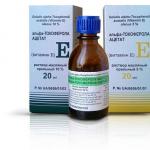All photos from the article
Fastening foam to a wooden wall can be done in a variety of ways, and the choice of one technology or another depends on the design features and type of finish. It is important to choose the best option that will provide high thermal insulation and protect structures from adverse effects. In this review, we will figure out how to carry out the work and what factors to pay special attention to.

What you need to know about this type of insulation
We note right away that polystyrene is not the most popular solution for wooden buildings for a number of reasons:
| Low vapor permeability | As you know, for the best preservation of a tree, it is necessary that the moisture from the material can evaporate freely. But if the surface is covered with foam, then the moisture has nowhere to go, and condensation may form inside the wood, so a high-quality |
| Material stiffness | If you use mineral wool, then it can be, and it will hold without additional fastening. Styrofoam can also be positioned in a similar way, but sheets may crumble during operation. |
| The need for sealing joints | After the fastening is completed, the gaps must be closed to prevent the penetration of cold, this complicates the process and makes it more laborious. Do not neglect this stage, since the result of the work largely depends on the insulation of the joints. |
Important!
High-quality foam should be selected, it is not worth saving and purchasing low-density materials, they are very fragile and can break even during operation.
In addition, it is desirable to use a heater with flame retardant additives in the composition, it is much more resistant to fire.
Mounting types
We figured out whether it is possible to sheathe a wooden house with foam plastic, and came to the conclusion that this option is appropriate when building a high-quality ventilation system. Now consider how to attach sheets to the surface.
crate
Do-it-yourself instructions are as follows:
- First of all, the frame is attached to the surface, in which the insulation will be located, the width of the spans should be 5 mm less than the width of the sheets in order to insert them tightly.
- Sheets are placed from the bottom up, if we are talking about walls, or from any convenient side, if the ceiling is being processed. After completion of work, it is necessary to check the surface for the presence of joints and cracks. If they are, then you need to seal them with polyurethane foam.

Using special fasteners
Consider how to fix the foam to a wooden wall using special fasteners, which are caps with a diameter of 5 or more centimeters and self-tapping screws, the length of which should be sufficient to securely fix the insulation to the wall.

The technology of work has the following form:
- First of all, you need to prepare the base- if there are gaps or significant irregularities in it, then they must be repaired to ensure the best effect.
- The workflow is carried out as follows: fastening is made from the bottom up, each sheet is fixed by several fasteners. The diagram below shows an option for saving fasteners, you don’t need to hammer all five roundels on one sheet, you can fix the element in the middle, and use the rest in the corners, that is, they will hold several sheets at once, which reduces material consumption several times.

- After completion of work, it is necessary to carefully inspect the surface and, if there are cracks, they must be filled with foam..
gluing
A very reliable option, and its only drawback is the high price of the trains, which is especially noticeable with large volumes of work.
The technology is simple, but requires accuracy:
- Before gluing the foam to the tree, it is necessary to level the surface, otherwise, with drops, the consumption of the adhesive composition will increase significantly, and the reliability of the connections may decrease.
- Next, you need to decide how to glue the foam to the tree, there are two main options: mounting polyurethane foam or a special adhesive, which is available in the same containers as foam, but has improved properties and increased yield. The second option is preferable, so try to use it.

- The surface must be free of dust and free of wet areas., as this negatively affects the adhesion of the composition. The composition itself is applied to the sheets with any option convenient for you - with a snake, around the perimeter, with dots. The most important thing is reliability, and the rest of the nuances do not matter.

- Next, the element is pressed tightly for a few seconds., after which it can be released, the glue begins to set within half an hour, complete solidification occurs in 24 hours.
Remember!
The final stage is the sealing of cracks at the joints, it can be moved either with the same adhesive composition or with mounting foam, there is no fundamental importance here.
Output
In fact, attaching foam to a wooden base is not difficult, it is important to carry out this work in such a way as to ensure the best thermal insulation performance and prevent damage to the material due to condensation. The video in this article will walk you through the workflow in more detail and demonstrate some of the points described above.
Reading 8 min.
Styrofoam fixed on the wall qualitatively insulates any structure. Due to good thermal insulation characteristics, high density, small load on the wall, and most importantly, low price, the material is in great demand.
Fixing foam is not difficult, but there are features that every installer must take into account. The features of fixing the foam are described in this article.
Mounting methods
Specialists for fixing foam plastic use different methods.
- Glue method.
This is a fast and convenient mounting method. It is enough to choose the right adhesive composition, and then apply it to the insulation. According to the initial state, adhesive compositions are divided into types:



- Mounting method.

Dowels with a wide cap are designed to reinforce plate fasteners. They are used for external wall insulation, as well as for increased load on the heat insulator.
There are several types of dowels, but all of them must have a sleeve, a core and a wide hat. If the dowel is hollow, then a nail or screw is used in the expansion zone. The plate is fixed in the corners and in the center. Compared to gluing insulation, this method is more time consuming.
- Combined method.
The simultaneous use of two methods of fixing the insulation allows you to achieve high quality installation. The adhesive composition isolates the surface from external influences, and the dowels increase the reliability of fastening.
Video instruction:
Fixing to concrete and brick wall
Often, for the insulation of concrete and brick walls, a special crate is made that holds the foam plates. Unfortunately, it is not always possible to install it, and in addition, there are additional costs. In practice, other methods of fastening are in demand.
- With the help of an adhesive.
This method has some peculiarities. Firstly, the individual components of the adhesive can destroy the foam, and secondly, not every stickiness of the adhesive will bind the foam to concrete and brick.
The fastening of the insulation plates is carried out in a certain sequence:
- the surface is leveled, then mud and oil deposits are removed from it;


- the heater is pressed and held.
- With the help of dowels.
How to glue styrofoam to wood?
If the walls of the room freeze in the winter and require insulation, then you need to pay special attention and purchase foam. But in order to complete the work, you need to learn how to insulate the walls with foam.
You will need:
Acrylic liquid nails
liquid foam
Self-tapping screws and washers
#1
Styrofoam is a cheap and warm insulation that is sold at any hardware store and has different densities. In addition to density, this material can have any thickness. Considering the question of how to glue the foam, you need to decide on the base and select the necessary glue. If the foam must be glued to the tree, then concrete contact, liquid nails on the foam or liquid foam will be required. You can use other fixing material that will hold the foam perfectly. The most reliable fastener for wood will be a self-tapping screw with washers. If the building freezes in winter, the walls are covered with frost, then the entire room will have to be insulated.
#2
Considering the question of how to insulate walls with foam, you should contact specialists who will provide all the information indicating the insulation of houses. Wooden buildings are easily insulated both from the inside and outside of the room. This will require acrylic-based liquid nails, because this glue is water-based and does not dissolve the foam. Having dealt with the glue, you should consider how to fix the foam. This will require pre-agreed wood screws and metal washers. But it is worth considering the whole course of work in more detail. It is more expedient to perform wall insulation from the side of the facade. By choosing this approach, you can avoid garbage in the room and reduce the living space.
EXPERT OPINION
#3
Next, priming is carried out with concrete contact and left for two hours to dry completely. After that, each sheet of foam is smeared with acrylic liquid nails and glued to the surface. The glue is applied in a zigzag pattern along the edges of the sheet and dotted in the middle, after which it is attached to the wall and attracted with self-tapping screws. Having considered this course of work, you can understand the question related to how to make foam plastic with your own hands. Having dealt with glue and fasteners, you should perform finishing work, which will indicate that the insulation of the building is completely finished.
#4
This will again require liquid nails or liquid foam. At the moment, you will need to glue the ends of the foam together and thereby seal all the seams. Liquid nails are squeezed out with a gun, after which a rubber spatula is used, thanks to which mashing is performed. When considering how to glue foam, it should be understood that liquid foam does this job perfectly. This glue is more like foam, which is squeezed out by pressing the sprayer. The essence of the work is quite simple, you should blow out all the seams with foam and give time to dry. In a short period of time, complete freezing will occur. Next, you need to remove all excess foam with a clerical knife.
This article was automatically added from the community
The thermal insulation of modern materials is based on the creation of volumes with a stationary gaseous medium. To increase the already high performance of materials for insulation allows gluing foam to the wall. For this, adhesive compositions are used, both in the form of semi-finished products and ready-to-use. Before you decide how to glue the foam, you need to understand at least a little the specifics of the use of adhesives.
Before gluing the foam to the wall, select the adhesive composition that is optimally suited to the wall material and the insulation itself.
The use of expanded polystyrene foam imposes certain restrictions on the substances that make up the adhesive used. When purchasing it, you must carefully study the ingredients and if it contains:
- esters (methyl acetate, butyl acetate);
- alcohols;
- derivatives of natural gas (propane, hexane and others);
- amines (aniline, etc.);
- hydrocarbon processing products (gasoline, kerosene, white spirit, etc.)
- ketones (acetone, etc.);
- compounds containing chlorine (dichloroethane, chloroform);
- nitrogen compounds (nitrobenzene, nitromethane);
then you do not need to buy such glue. The compounds included in it have a destructive effect on the structure of expanded polystyrene either immediately or over time.
To obtain a high-quality result when gluing polystyrene foam on walls, it is recommended to use the following materials:
- formulations based on dry mixes;
- "liquid nails";
- mounting foam;
- polyurethane foam.

In some cases, it is possible to combine the indicated adhesive compositions.
Before gluing the foam, its surface can be treated with a needle roller to improve adhesion with adhesive mixtures.
We use semi-finished products

Dry adhesive compositions allow you to glue the foam to the brick wall efficiently and quickly enough. Their use has several advantages:
- low cost;
- availability;
- low consumption of glue per unit area.
- place of sale (it is desirable to purchase bags located and stored indoors);
- the integrity of the package (the surface of the bag must be without through gusts);
- production date (it is not recommended to buy a mixture made 12 months before purchase);
- absence on the bag of traces of liquid ingress or wetting of the surface;
- the mobility of the contents when carrying (there should not be a feeling of having a large stone in the bag).

- the need for water to prepare the solution;
- the time spent on its preparation;
- relatively long final fixation on the surface (about 3 days);
- the impossibility of attaching polystyrene foam to concrete and metal surfaces.
The finished mixture can be applied both to the foam and to the wall. Plate stickers are made from the bottom up.
Help an old friend
Of particular difficulty and confusion is the question: “What kind of glue to glue the insulation to the metal?” The answer is simple.
Sticking foam on a metal surface is carried out using PVA building glue.
Being an affordable and inexpensive material, it does an excellent job with the task assigned to it. The burlap impregnated with glue is fixed on the metal. After the glue dries, the foam is glued to the wall. Plates are abundantly lubricated with PVA.

Expect an increase in the density of the glue (during this time, you can spread the next plate). Press the plate for a short time. As a result, a good fastening strength result is obtained.
Fast but expensive
Many compositions require holding for some time (sometimes long) the glued board. How can I quickly glue the thermal insulator, thereby reducing downtime?
"Liquid nails" are used when it is necessary to insulate a small area of \u200b\u200bthe wall from any material. Before gluing the foam to concrete or other material, clean it of foreign deposits and cover with a primer layer.

The main advantages of this composition are:
- versatility of application;
- fast installation (long-term holding of the sheet is not required).
A rather high cost should be attributed to the disadvantage, but you have to pay for convenience. "Liquid nails" are sold in tubes of 300 ml. Squeezed out of the tube with a sealant gun.
And here you are, my old lady
Polystyrene foam can be glued to concrete, brick, stone with mounting foam. To do this, just apply it around the perimeter and cross through the center. Attach the plate to the installation site. After installing several rows, fill the gaps between the slabs with foam.
Advantages of using polyurethane foam:
- reliable fastening of plates on stone building materials;
- ease of application.
There are still many more cons:
- increased degree of expansion after application (due to uneven expansion, voids and surface irregularities may form);
- high consumption of foam per square meter;
- the need for long-term fixation of the plate due to the long setting;
- destruction of the structure of the thermal insulator under the influence of foam components is possible.

If you can reduce the consumption by using a foam gun, then nothing can be done about other shortcomings. Therefore, it remains only to accept or choose another adhesive composition, which will be used to glue polystyrene foam.
Young, but strong, he is devoid of flaws
If you ask: “What is the best way to glue foam insulation?”, Then you will hear in response: “Polyurethane foam adhesive-foam”. It is specially designed for fastening polystyrene foam to vertical surfaces of various materials.

Before sticking the foam to concrete or other material, clean the surface of foreign deposits, dust and dirt. Prime the wall. Using a gun, apply foam to the surface of the slab around the perimeter and in the center of the sheet. Attach the adhesive sheet to the wall. Hold for 5 seconds. You can move on to gluing the next one.
The use of polyurethane foam adhesive as a means of fastening has huge advantages:
- excellent adhesion of the foam surface with any others;
- low consumption of foam;
- convenience of work;
- speed of installation;
- high moisture resistance.
In earlier periods of construction, clay was used to insulate the walls. Before sticking the polystyrene foam, it is not necessary to remove the clay layer. It is enough to cover the surface of the clay with any acrylic primer. Now you can glue the insulation.
In the process of application and operation of the glue-foam, no minuses were found.
You need to know how to properly glue the foam. Pay attention to the absence of voids between the boards to be glued, maintaining the strict verticality and horizontality of the sheets.
When insulating the walls of the house, you can only do with the mechanical method of fixing the foam. But the use of glue creates additional closed air spaces under the slabs, thereby reducing heat loss from heated rooms.
An interesting experiment with styrofoam gluing:




